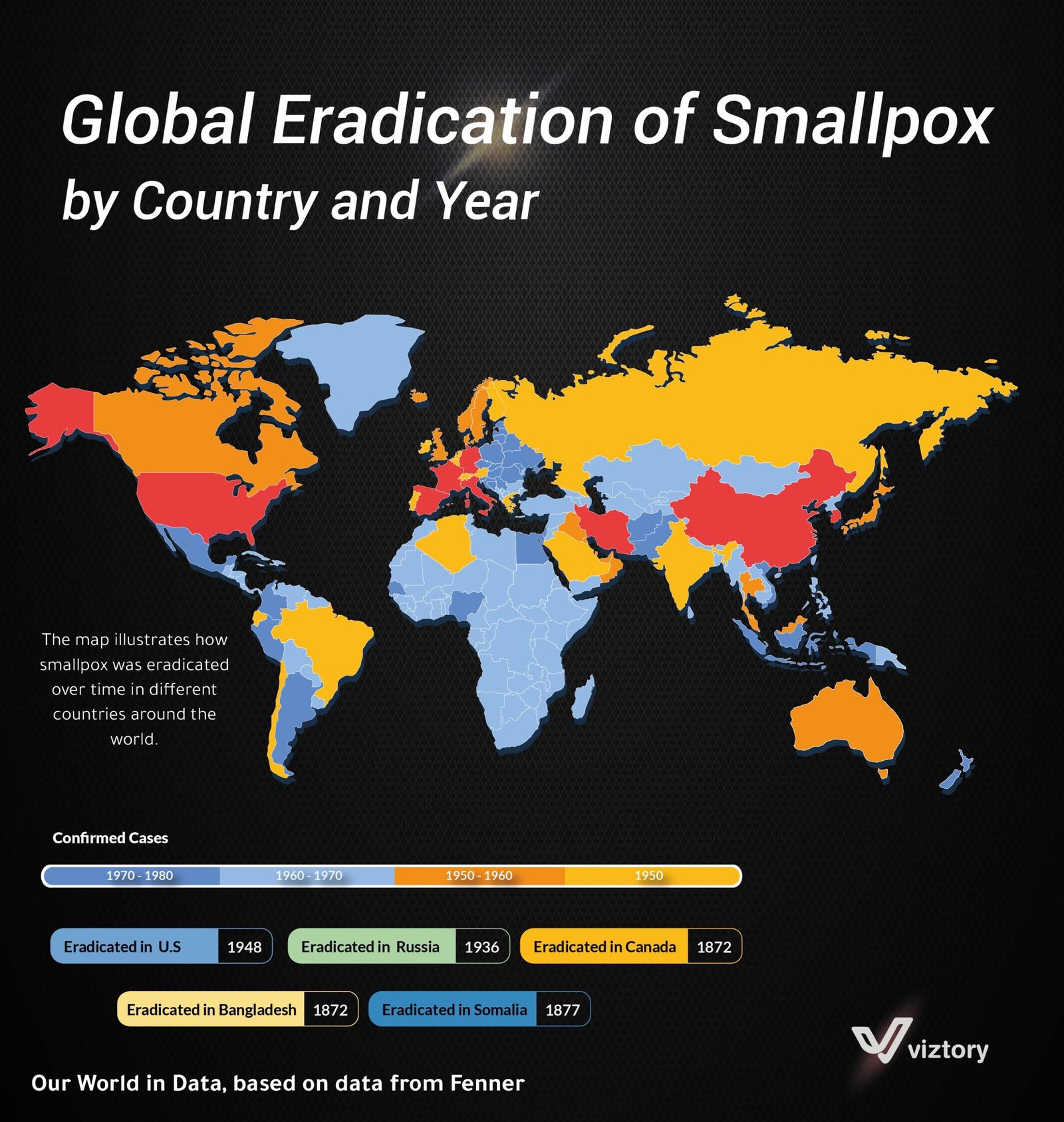The Global Eradication of Smallpox: A Milestone in Healthcare
-
Aug, Thu, 2024
The Global Eradication of Smallpox: A Milestone in Healthcare
The eradication of smallpox stands as one of the most significant achievements in the history of public health and global healthcare. The visual representation in the provided image highlights the timeline and geographical spread of smallpox eradication by country and year, showing how coordinated international efforts led to the elimination of a disease that once claimed millions of lives.
Understanding Smallpox and Its Impact
Smallpox, caused by the variola virus, was a highly contagious and deadly disease that plagued humanity for centuries. Characterized by fever, vomiting, and a distinctive skin rash that left survivors with permanent scars, smallpox had a mortality rate as high as 30% in severe cases. The disease was responsible for an estimated 300-500 million deaths in the 20th century alone.
Global Efforts and the Path to Eradication
The map shows the gradual eradication of smallpox across different regions, highlighting key milestones in this global campaign. The timeline is color-coded to represent the decades in which countries reported their last cases of smallpox:
- Dark Blue (1970-1980): Marks the most recent period of smallpox eradication, where the final cases were reported before the disease was declared eradicated.
- Light Blue (1960-1970): Indicates the decade before, showing significant progress in eradicating the disease.
- Yellow (1950-1960) and Orange (before 1950): Represent earlier efforts in various countries, where the disease was brought under control through vaccination and other public health measures.
Key milestones include:
- United States (1948): Eradication achieved as a result of rigorous vaccination campaigns.
- Russia (1936): Early eradication in the Soviet Union, showcasing the effectiveness of mass vaccination.
- Canada (1872): One of the earliest countries to report eradication, reflecting the success of early public health interventions.
- Bangladesh (1872) and Somalia (1877): Represent some of the last countries to eradicate smallpox, indicating the challenges in regions with limited healthcare infrastructure.
The Role of Healthcare Systems
The eradication of smallpox was made possible by the development and widespread distribution of the smallpox vaccine, first developed by Edward Jenner in 1796. Over the years, healthcare systems around the world adopted vaccination as a primary tool in the fight against smallpox. International cooperation, spearheaded by the World Health Organization (WHO), was crucial in coordinating efforts to reach even the most remote and vulnerable populations.
Public health campaigns included mass vaccination, surveillance, and containment strategies, which were essential in tracking and responding to outbreaks. The collaboration between governments, healthcare workers, and international organizations exemplifies the power of a united global healthcare approach in combating infectious diseases.
Lessons for Modern Healthcare
The eradication of smallpox provides valuable lessons for modern healthcare, particularly in the context of combating pandemics and emerging infectious diseases. It underscores the importance of:
- Global Collaboration: Effective disease control requires cooperation across borders and the sharing of knowledge and resources.
- Strong Public Health Infrastructure: A robust healthcare system with the capacity for mass vaccination, surveillance, and rapid response is vital.
- Community Engagement: Success depends on public trust and participation in health initiatives, as seen in the widespread acceptance of vaccination during the smallpox eradication campaign.
Conclusion
The eradication of smallpox is a testament to what can be achieved when the global community comes together with a shared goal. As we face new healthcare challenges in the 21st century, the lessons learned from the fight against smallpox continue to guide public health strategies and inspire hope for a future free from preventable diseases.
This map not only represents a historic victory in healthcare but also serves as a reminder of the ongoing efforts needed to protect global health and ensure that such triumphs are not forgotten.

